So where have the markets gone this week? Past the daily noise and headlines, this weekly post will examine the major markets (debt, commodities and currencies) before analysing the Australian stock market.
First the wrap-up from Friday’s night session on European and American markets:
The bullishness in the Asian session did not translate into Europe, with UK FTSE slipping 0.3% to 5911, the German DAX also doing the same, down 0.3% to 6921 points.
The Euro (EUR/USD) followed, losing over 1 cent against the USD to be just below 1.32, as all major currencies fell against the reserve currency, the USD Index higher to 79.4 points.
The AUD was the worse off of the major pairs, losing 0.9% to be just above 1.07 against the USD.
On the other side of the Atlantic, the US bourses followed Europe, with the S&P500 down 0.3% to 1369 points as the Dow Jones Industrial Average finished flat, unable to breach the elusive 13000 point barrier again.
On to the important debt markets, where US 10 year T-Notes were bid up, yields slipping below 2% to 1.93%, with German bonds (bunds) improving to 1.8% yield. For reference, Aussie 10 year bonds were sold off, yields rising to 4.12% – getting closer to the cash rate.
To commodities, where energies fell strongly, WTI crude and Brent crude both falling over $2USD per barrel, to be below $107 and $124USD per barrel respectively.
Gold also felt the risk-off move, down by about $7 in a flat session to $1711.50USD an ounce.
Weekly Analysis
US Dollar Index (DXY) – contrary to popular opinion the “paper” currency of the world is in a cyclical bull market and this week almost touched its long term moving average, before heading back to resistance at 80 points. A break above this level is nominally bearish for risk-on assets like stocks and commodities.
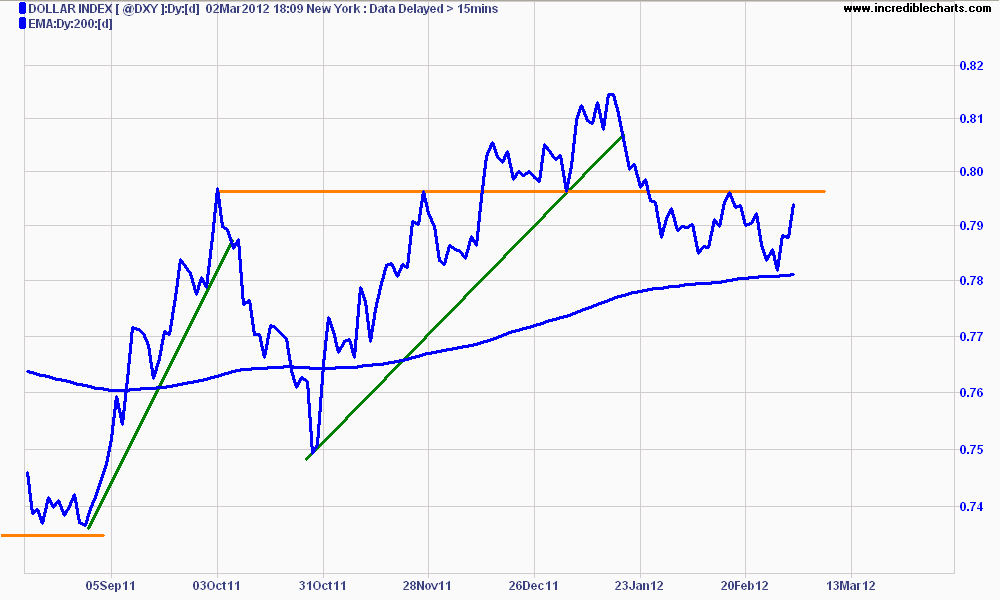
Euro (EUR/USD) – obviously the inverse is true of the troubled Euro, which after breaking out alongside stocks post-Xmas and into the NY, has stalled below its long term moving average. A break above this level – around 1.35 against the USD would probably confirm a bullish move in risk.
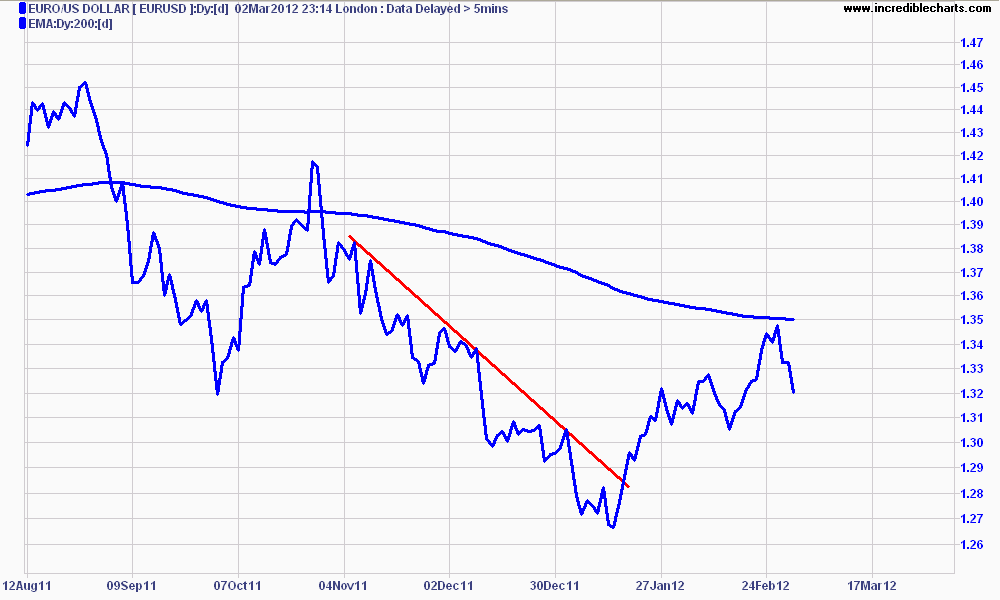
Aussie (AUD/USD) – the Aussie dollar has been threatening to break free of its 1.07 resistance level against the USD. The backdrop is months of wild volatility between 95c and 107c. For now, the commodity proxy is moving sideways, with a bullish bias.
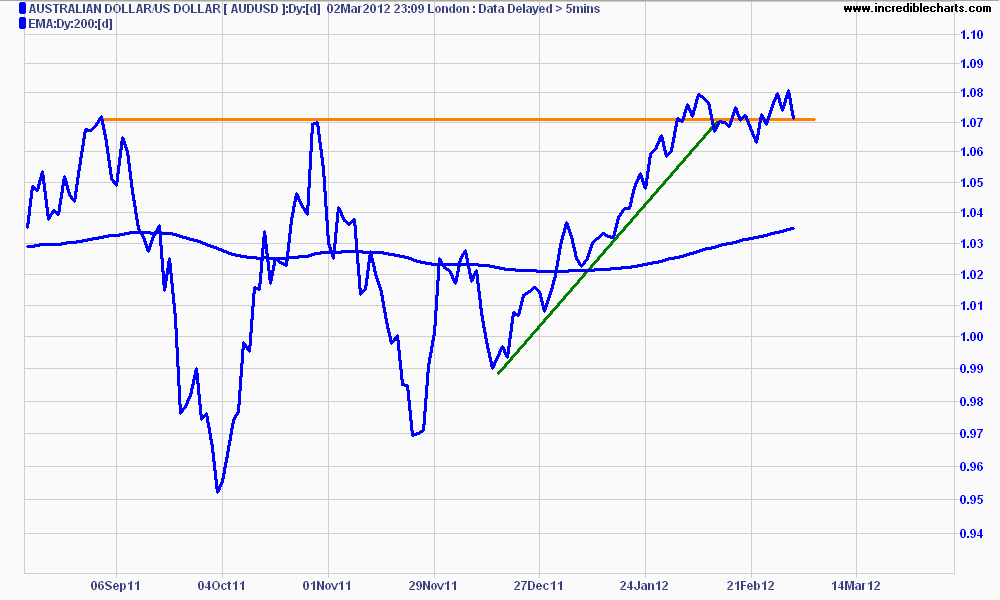
AUD/JPY – this pair is closely correlated to the local share market, and on the daily charts looks more ebullient than the USD pair, breaking out above 82 in early February. On the long term weekly chart you can see the ASX200 (green) is trailing this breakout. Perhaps Captain Stevens needs to pull the rate lever again?
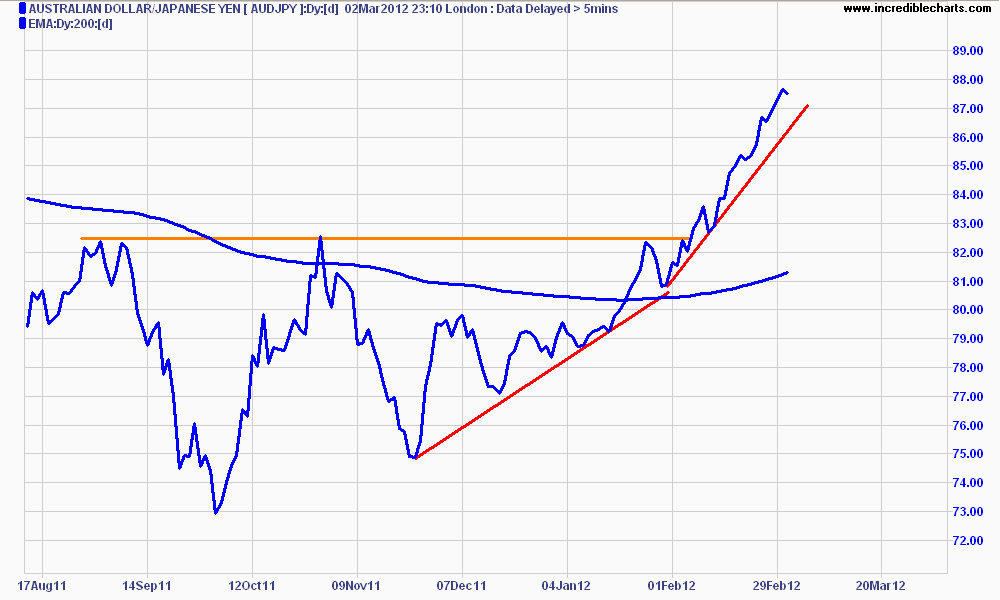
Gold (USD) – the shiny “currency” suffered a $100 pullback this week on news that further easing by the Federal Reserve was likely off the table. The next day, traders realised that interest rates were still going to be at zero for another 2 years (at least) and the shiny metal recovered somewhat. On the weekly chart, it has created a bullish flag. A break above the upper boundary around $1800USD an ounce would likely continue the secular bull market in gold, with continued support around $1600USD an ounce. This pattern could morph into a sideways funk however, so it bears (sic) watching.
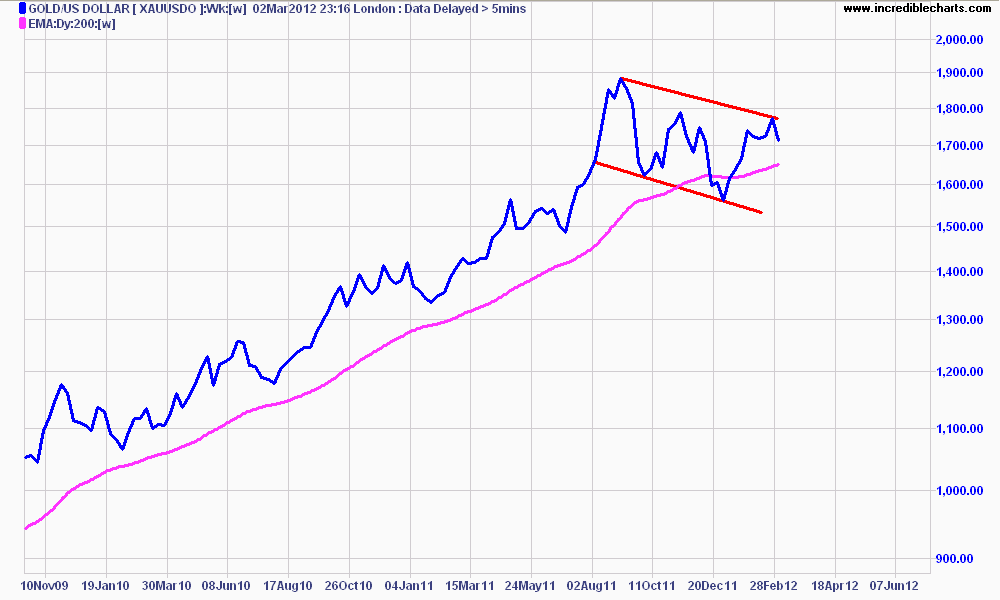
US 10 year T-Notes (TNX) – the daily chart shows bonds continue to be bid up to the 2% yield level (higher the bond price, lower the yield), as this “dangerous” asset continues to hold strength. A break above 2% would signify a change in investor sentiment and move to more riskier assets like stocks and commodities. Its a holding pattern for now.
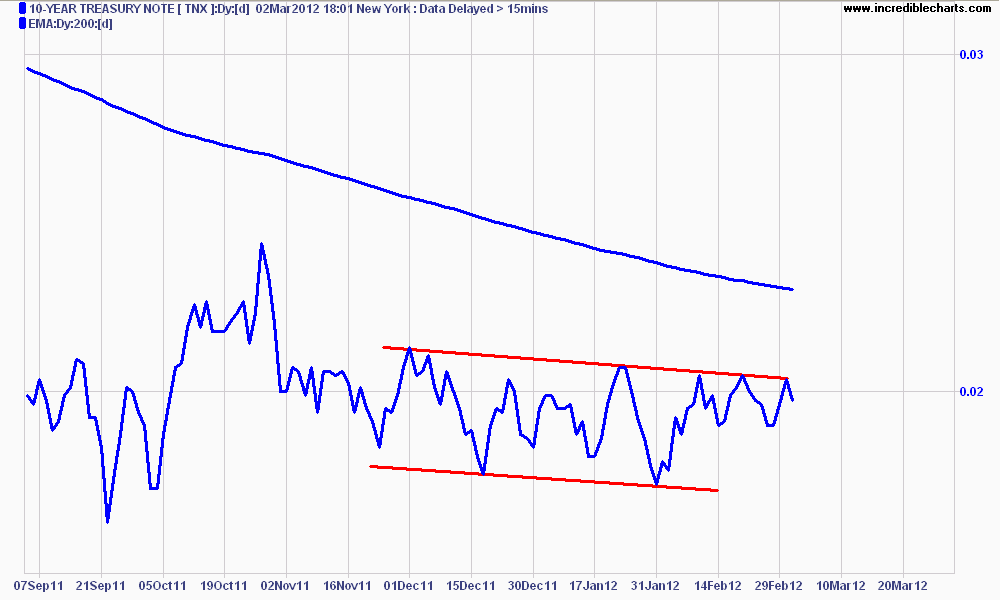
CRB Index – the commodities index, which for Aussie stock watchers resembles the ASX200 in magnitude, is trying to break free of resistance around the 330 point level after it followed other risk assets post-Xmas.
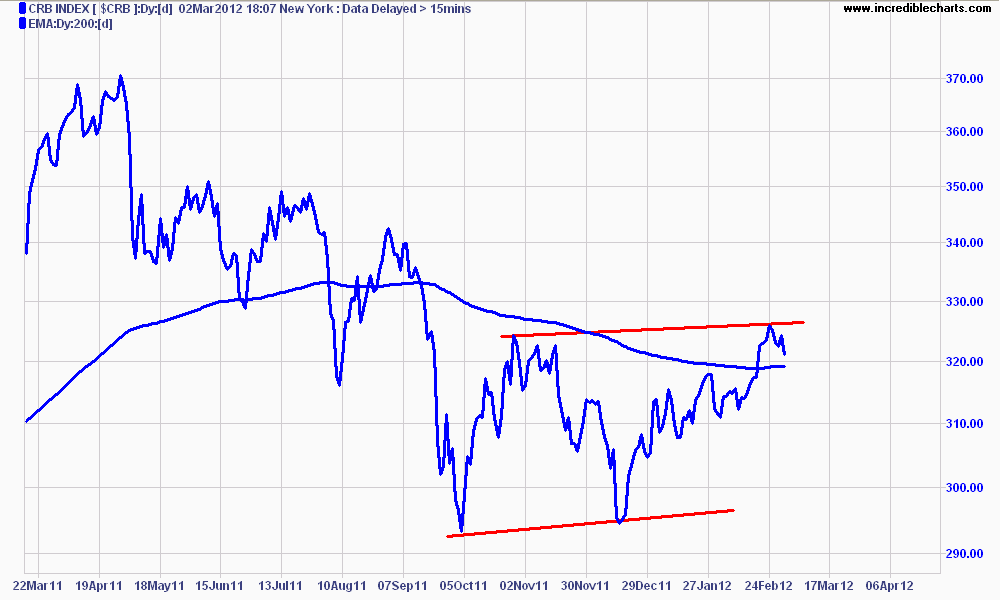 Crude (WTI and BRENT) – this hasn’t stopped crude oil resume its bullish path, with WTI breaking out above $100 a barrel this week, and the more important Brent, which did not suffer the same type of falls as its lighter, sweeter brother in the 2011 correction, also heading back to its record high above $120USD a barrel. From a macro-view its hard to be bullish on broader economic growth when energy prices remain so high and have the potential to go much much higher, particularly with oodles of liquidity swimming around world risk markets right now.
Crude (WTI and BRENT) – this hasn’t stopped crude oil resume its bullish path, with WTI breaking out above $100 a barrel this week, and the more important Brent, which did not suffer the same type of falls as its lighter, sweeter brother in the 2011 correction, also heading back to its record high above $120USD a barrel. From a macro-view its hard to be bullish on broader economic growth when energy prices remain so high and have the potential to go much much higher, particularly with oodles of liquidity swimming around world risk markets right now.
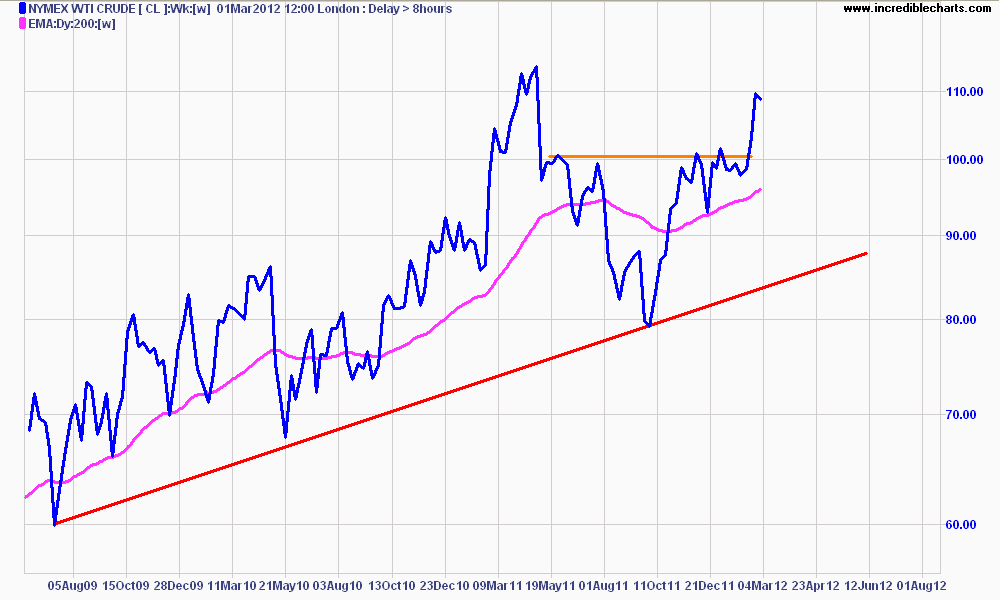
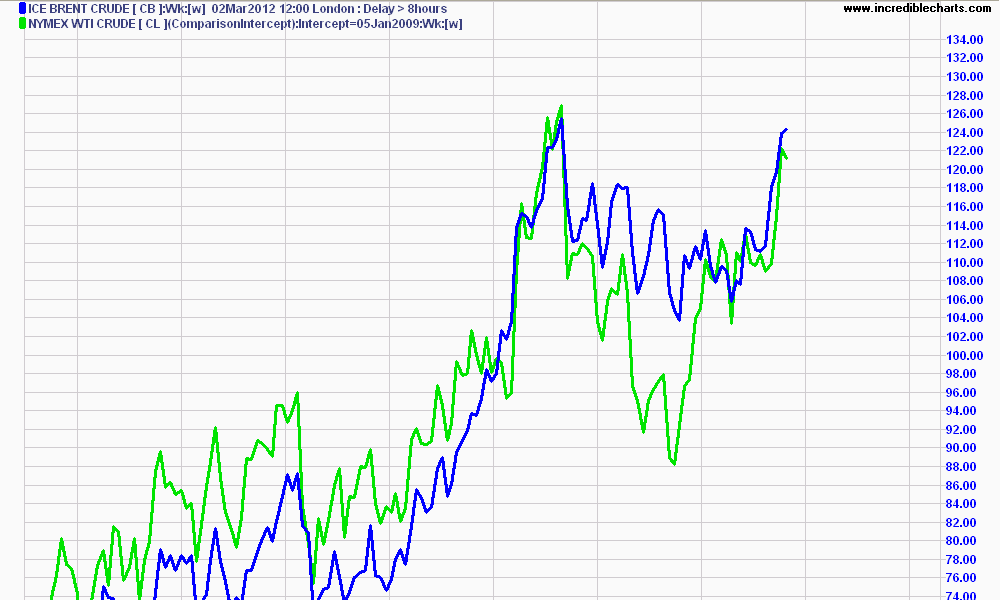
Volatility (VIX) – volatility is looking very very benign this week, as the chart shows it has decelerated markedly since late 2011, currently bottoming. This could be the calm before the storm, or just another “great moderation”. No one knows, but the VIX is a better hedge than gold or the newly released property index on the “underinvested” Australian property market, which I may or may not start following.
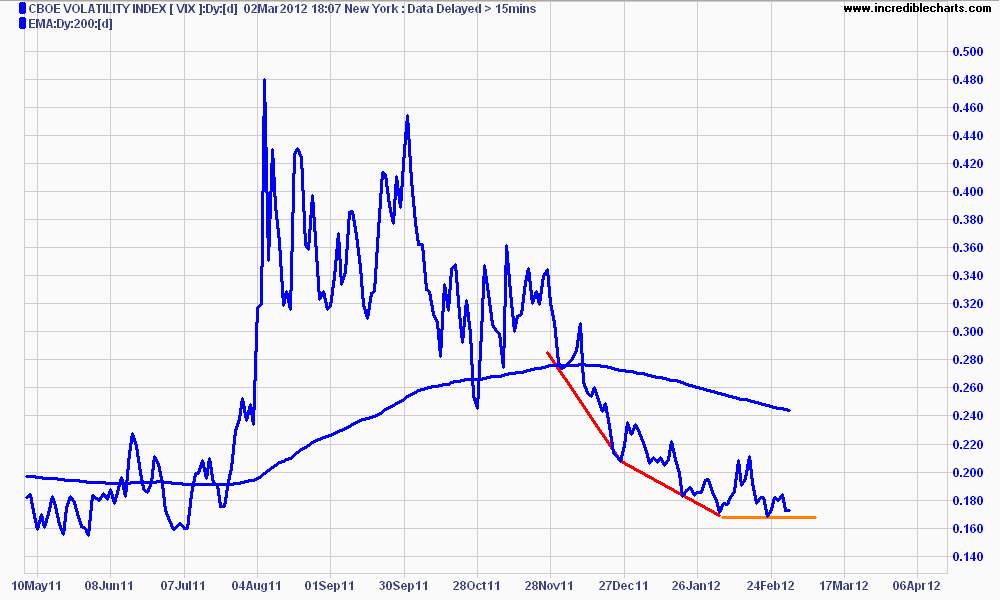
S&P500 – finally to stocks (you need to understand the above first, before looking at stocks or you have 1 eye closed…) The US markets broke past there post-GFC nominal highs, returning to the heady heights before the 2011 correction. The chart is obvious – this trend looks tired and overbought.
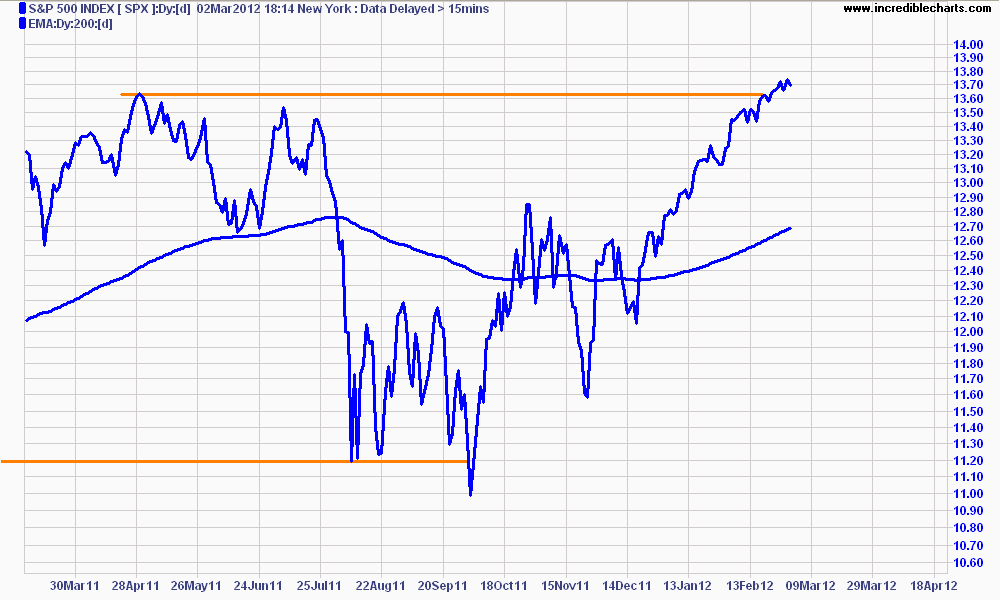
I expect a retracement in the coming week(s) possibly even as low as the 1270 point mark, before a likely liquidity led libation that could push the index up higher. Fundamentally, US stocks are not cheap, but not expensive either, but earnings growth going forward will be anaemic, but much much better than Aussie stocks (around 5% vs 2% at best).
Shanghai Composite (SSEC) – this week saw a continuation of the bullish breakout of the SSEC’s medium term downtrend channel. It is now hitting resistance at its 200 day moving average, so this could be a bull trap as China’s economy continues to move to slower, sustainable growth.
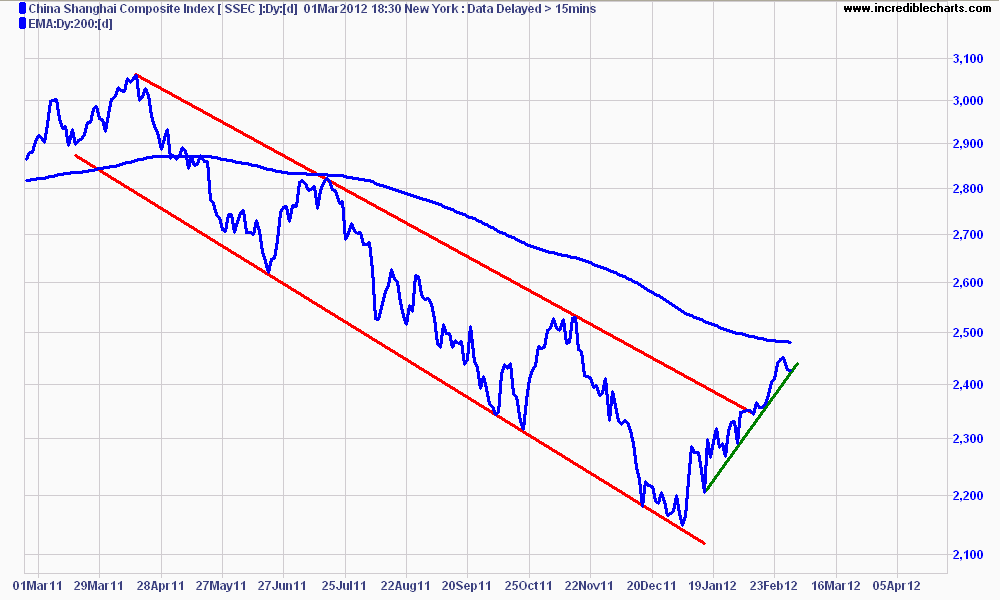
Nikkei 225 (N225) – in contrast, Japan’s major bourse is bursting with bravado. This is obviously overbought whilst the breakout was also easy to spot both technically and pattern wise (inverse head and shoulders). I expect a heady retracement, but would not discount a continued boom as the BoJ wants to create inflation in the domestic economy – this is usually good for stocks.
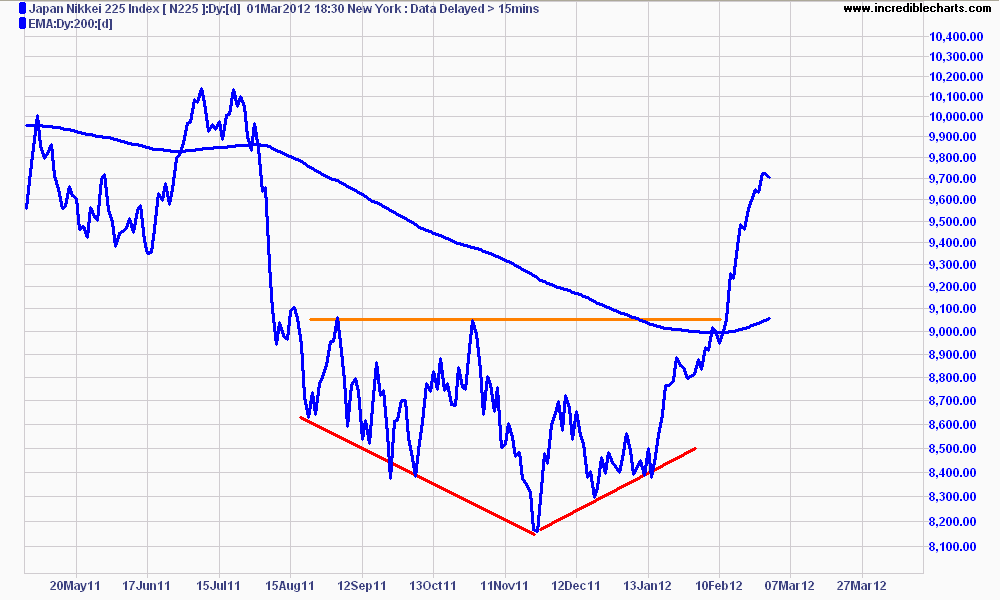
S&P/ASX200 (XJO) – finally to our local bourse. On the daily chart, it still looks anaemic. After observing all the other markets above can you now understand why risk is looking elsewhere to park their money? The market needs to break 4300 points firmly, or it will stay in this sideways funk for awhile.
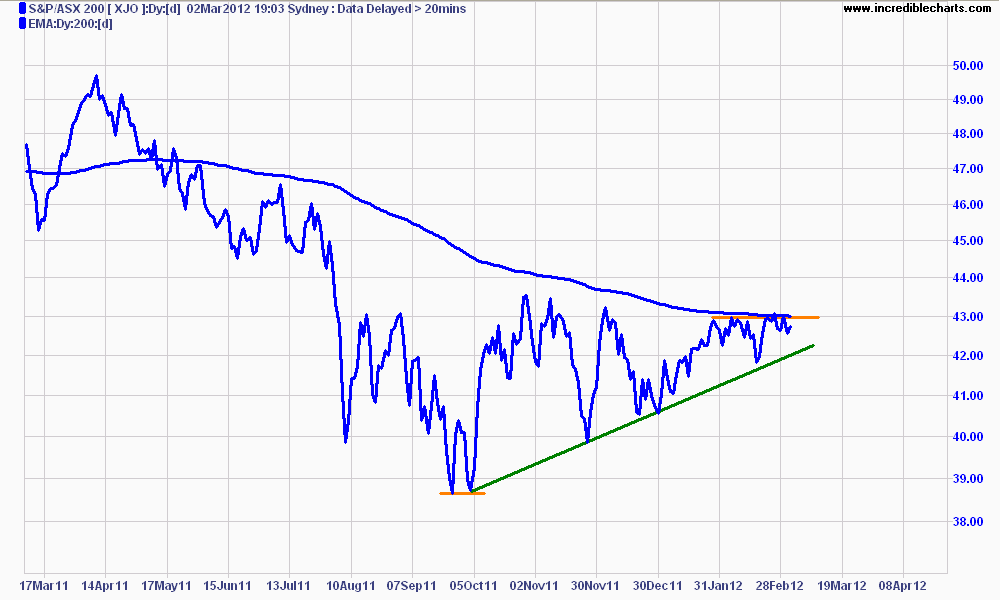
On my monthly chart study, the ASX200 is still in a secular bear market, but wants to have a cyclical bull market, moving up into the 4300-5000 point trading range. My target for any breakout would be around the midpoint (with possibly intraday higher) of around 4700 points, before settling down into the secular bear market trend again as the Australian economy continues to under perform its long running trend.
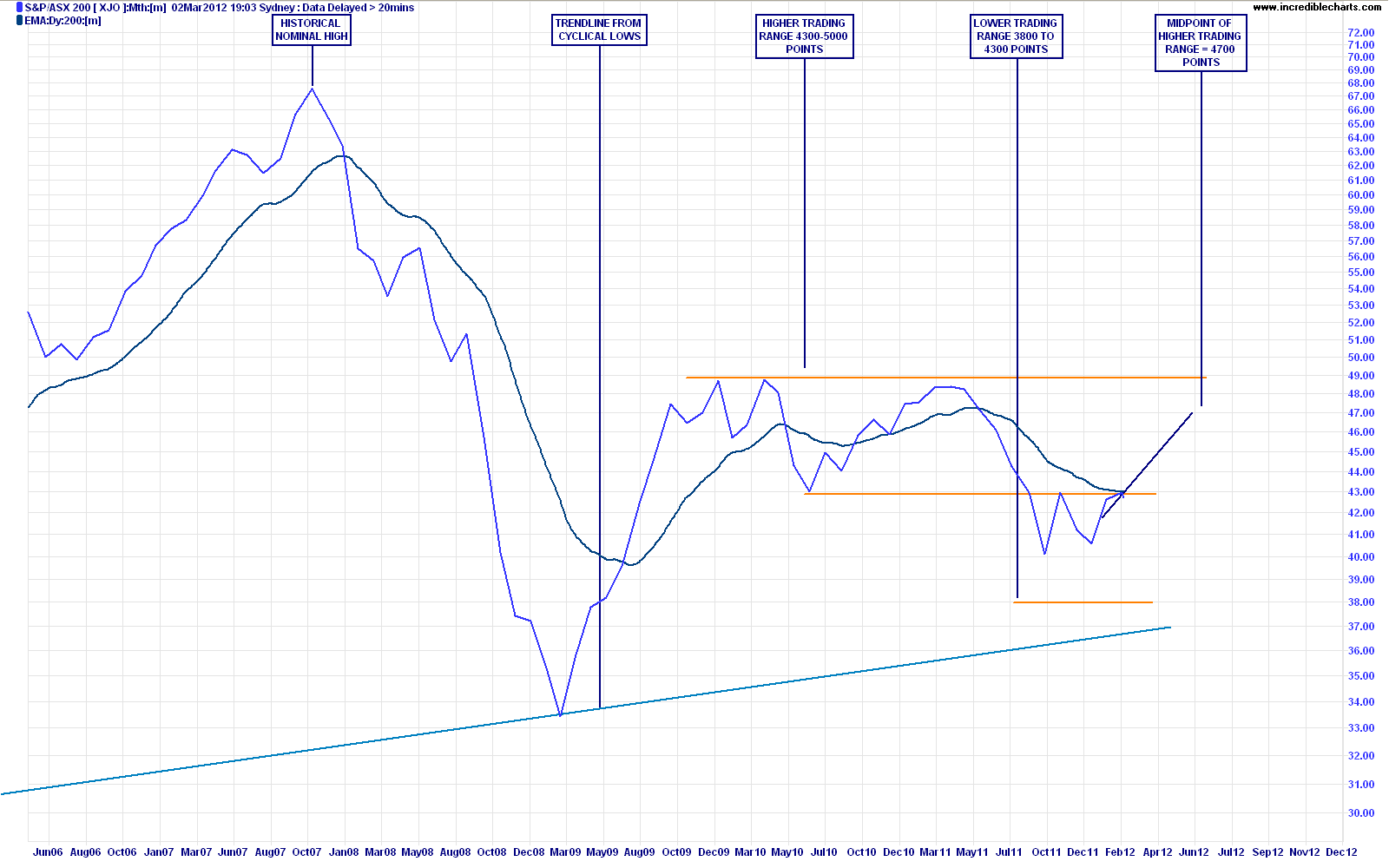
Dividends are key here, as is active or passive hedging, or go elsewhere to capture meaningful capital gains.
The SPI Futures are pointing to a lower open for the ASX200 on Monday, down around 15 points to the 4260 level.
Enjoy your weekend and thanks for reading.
Disclaimer: The content on this blog should not be taken as investment advice. All site content, including advertisements, shall not be construed as a recommendation, no matter how much it seems to make sense, to buy or sell any security or financial instrument, or to participate in any particular trading or investment strategy. The authors have no position in any company or advertiser reference unless explicitly specified. Any action that you take as a result of information, analysis, or advertisement on this site is ultimately your responsibility. Consult someone who claims to have a qualification before making any investment decisions.